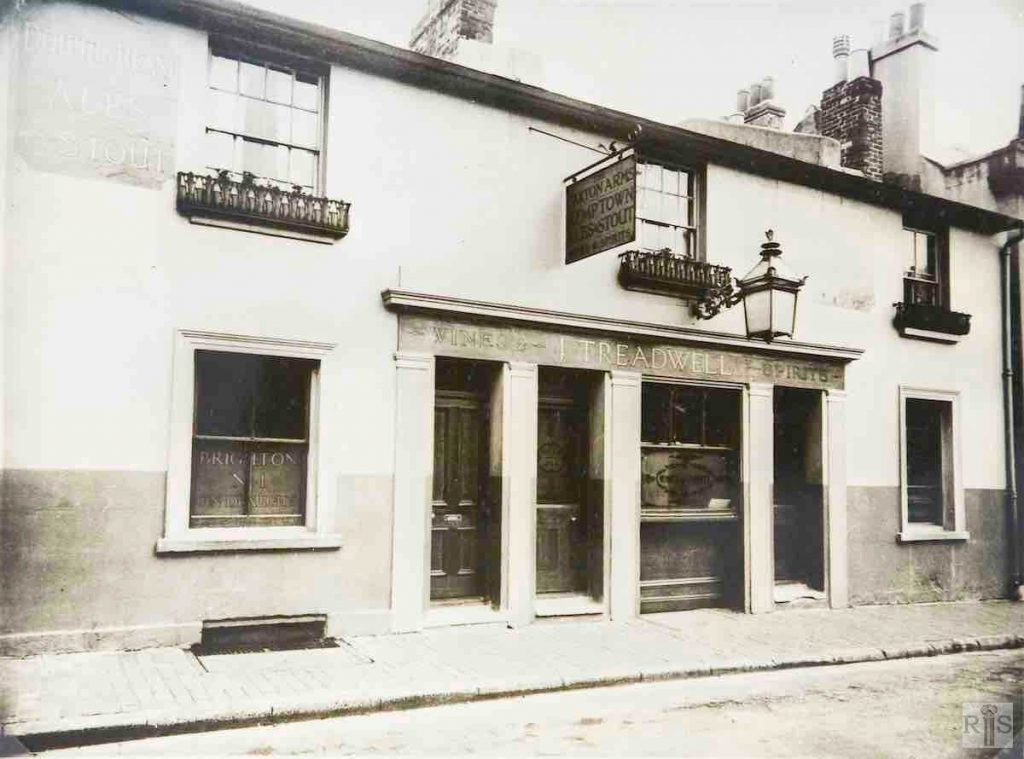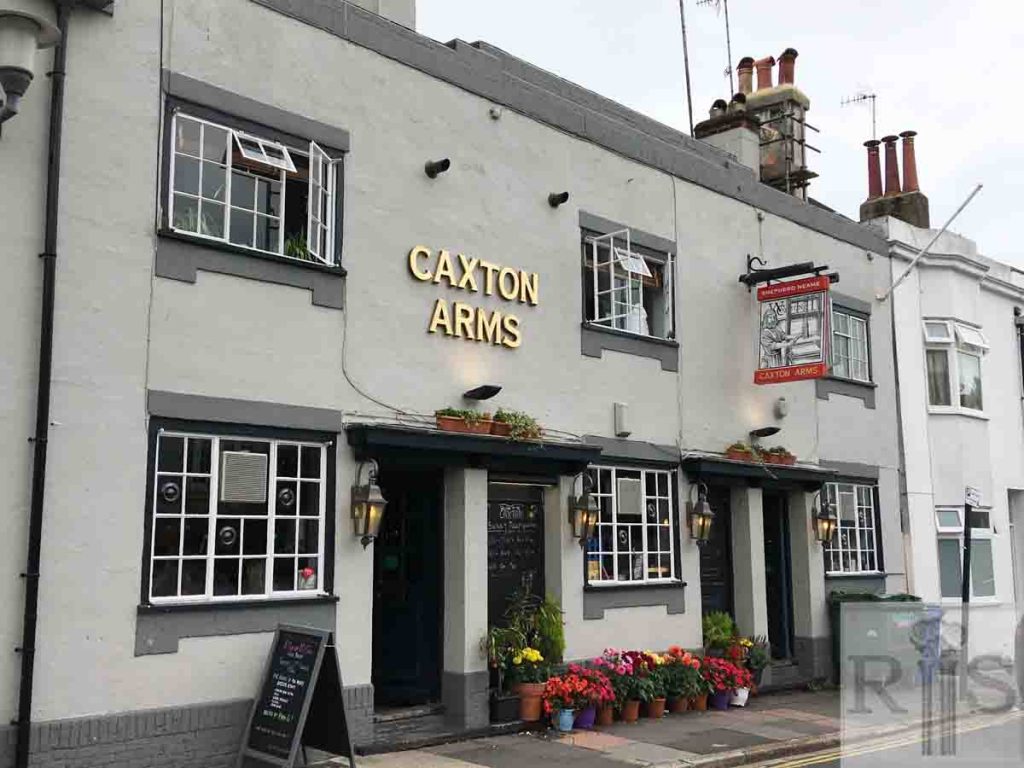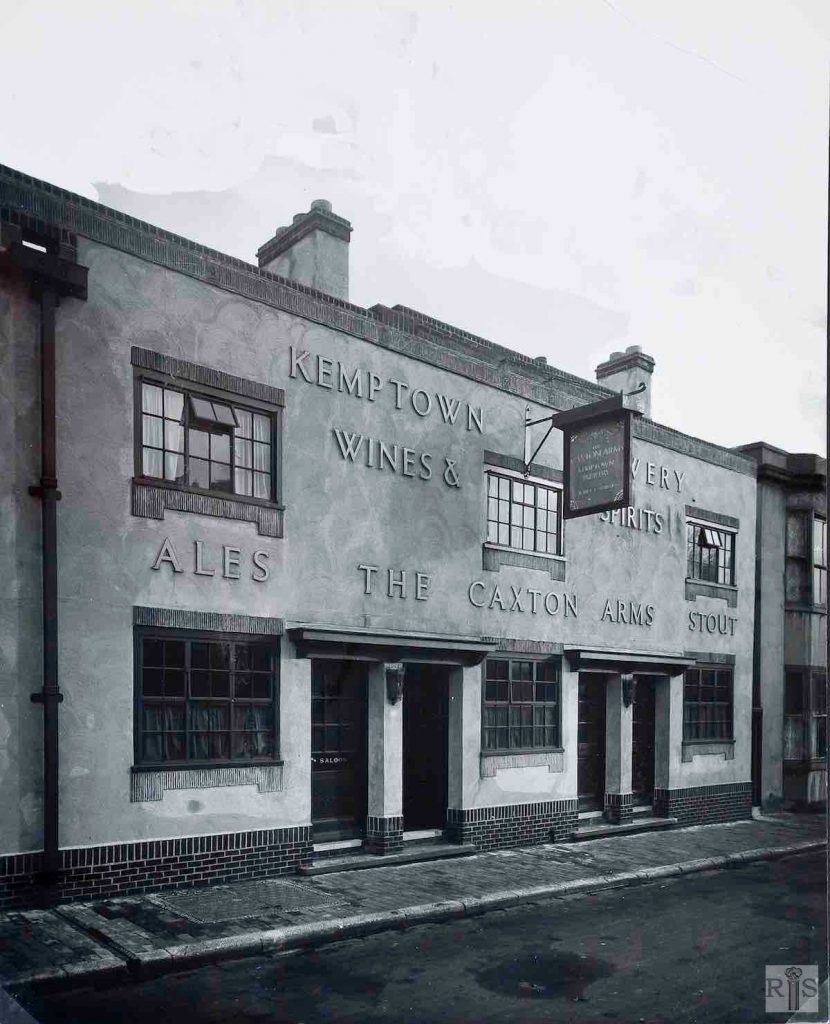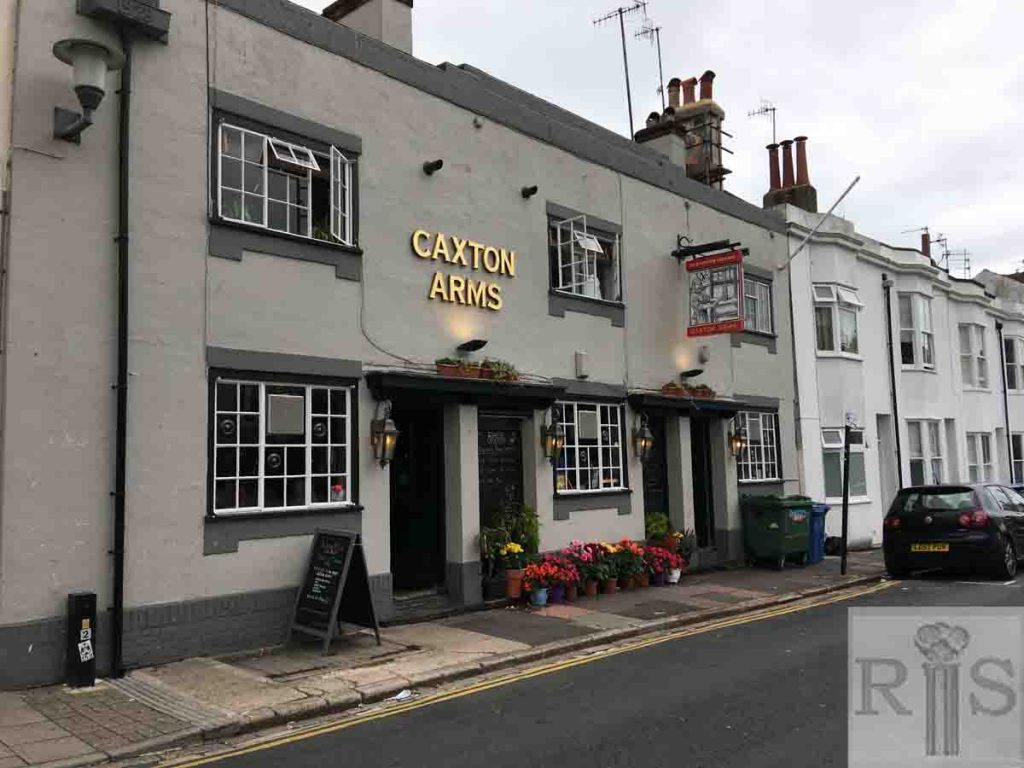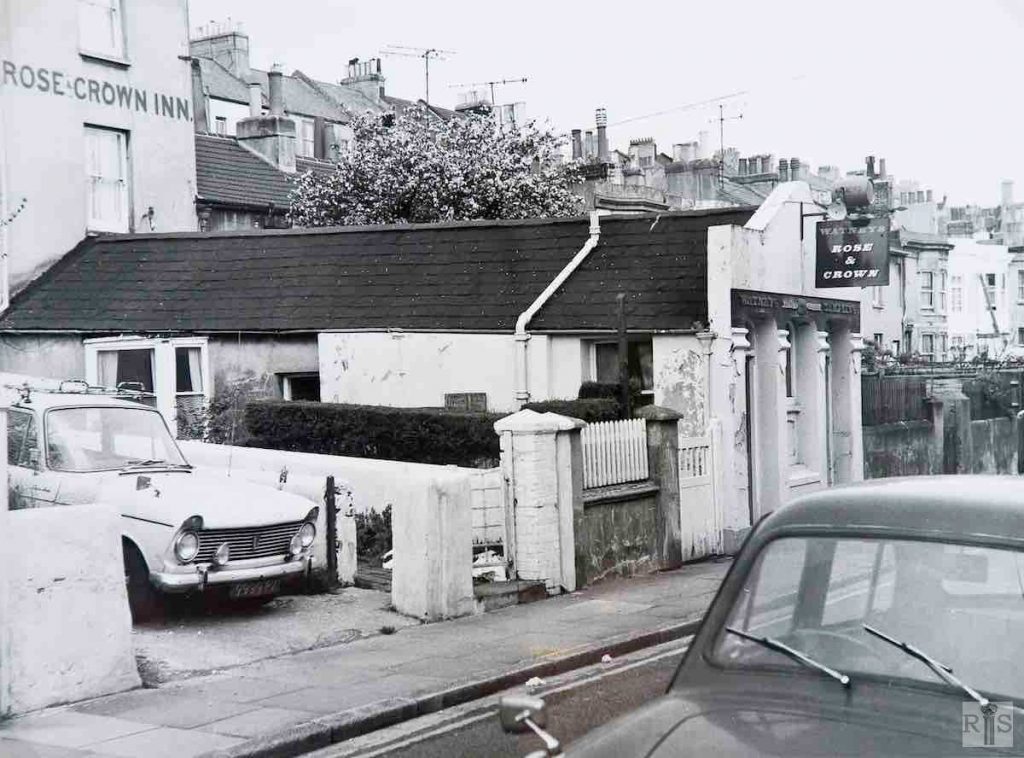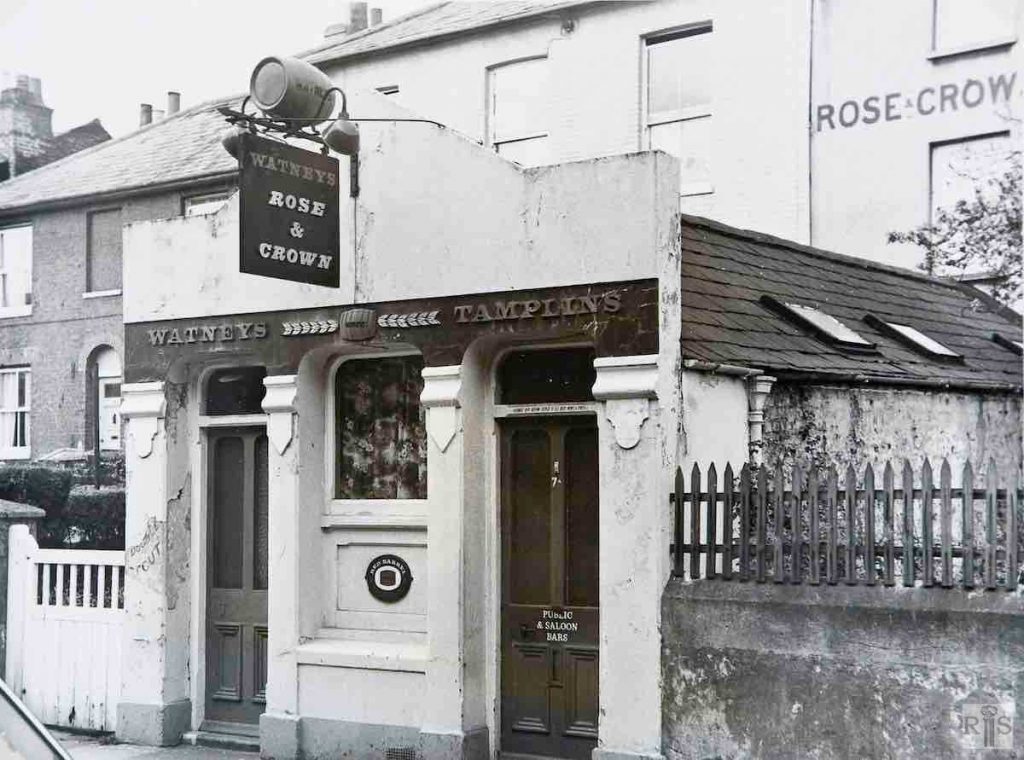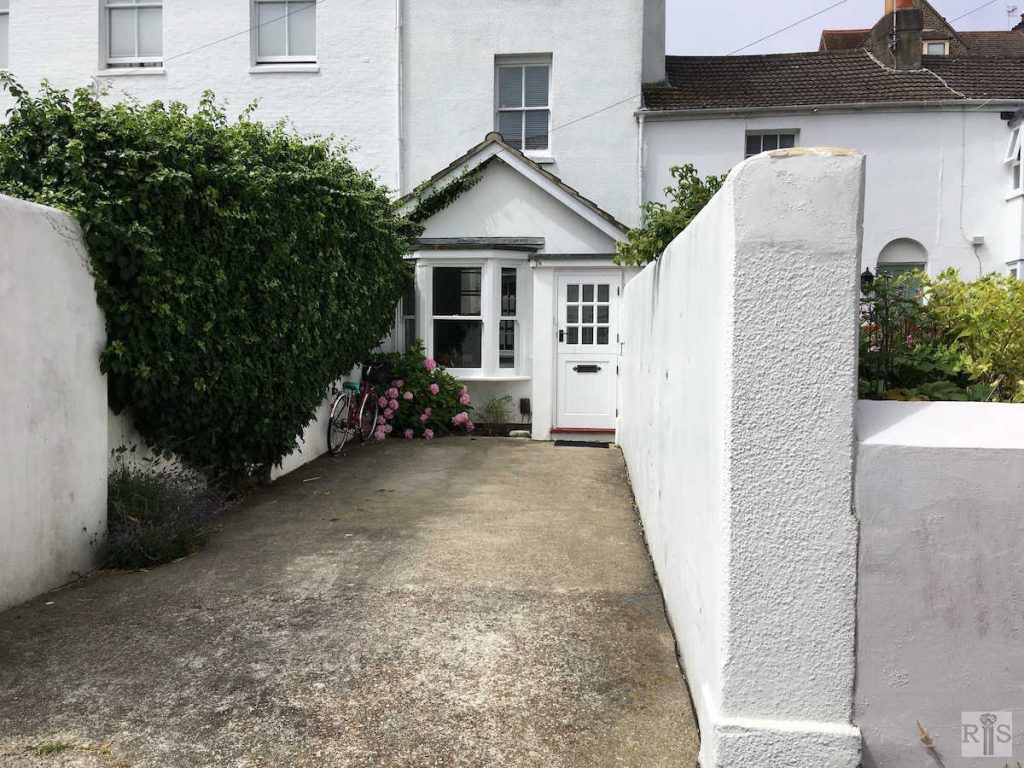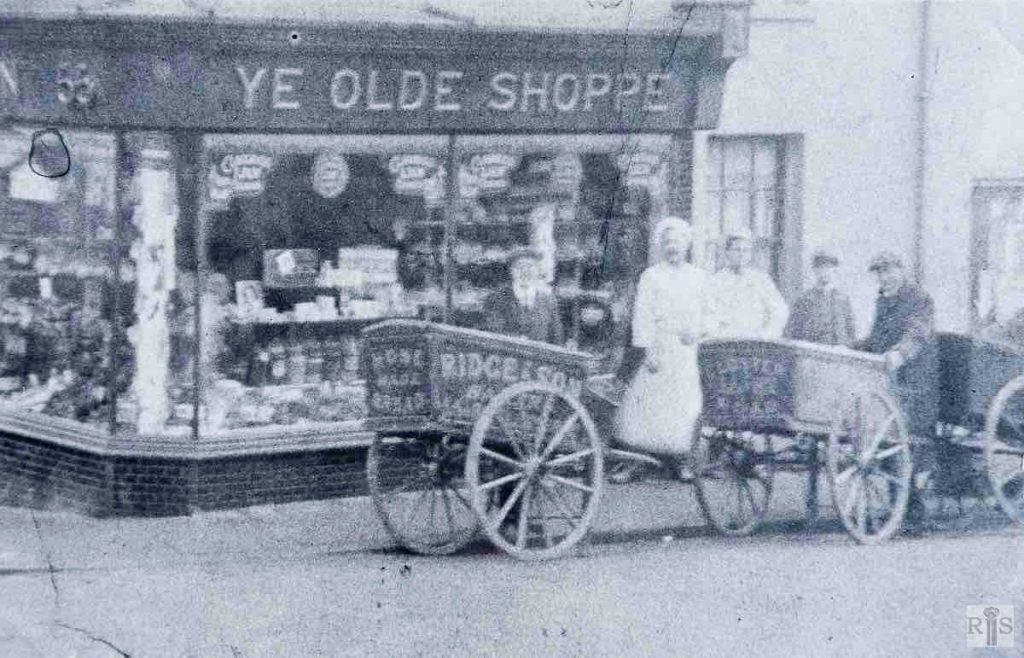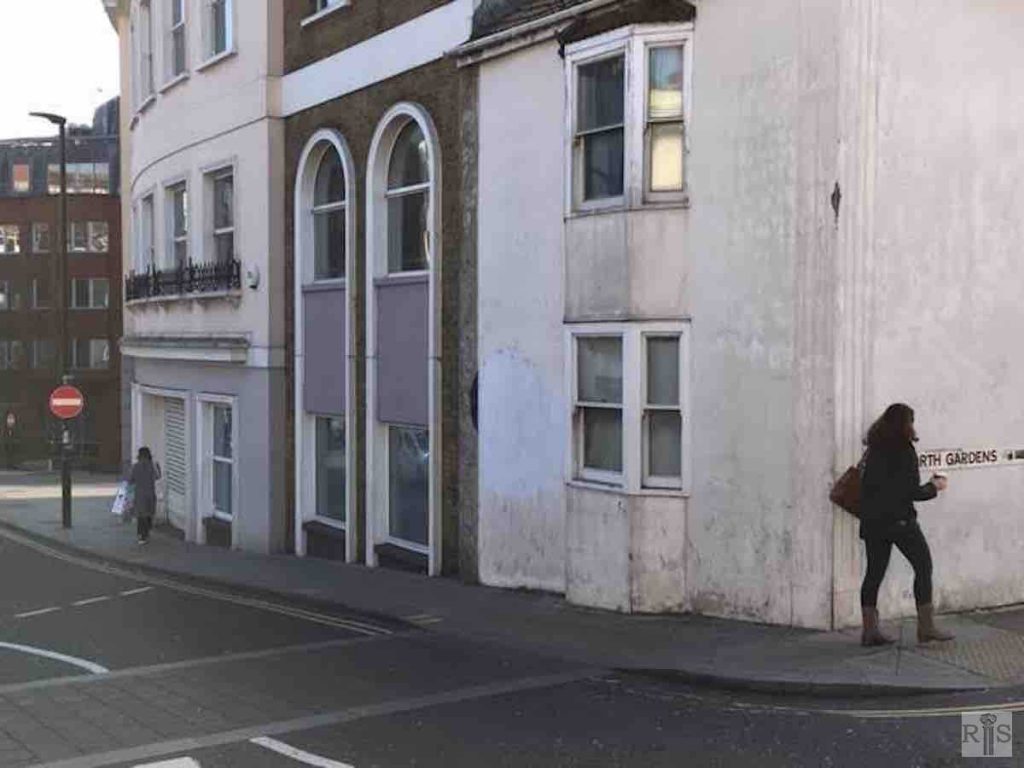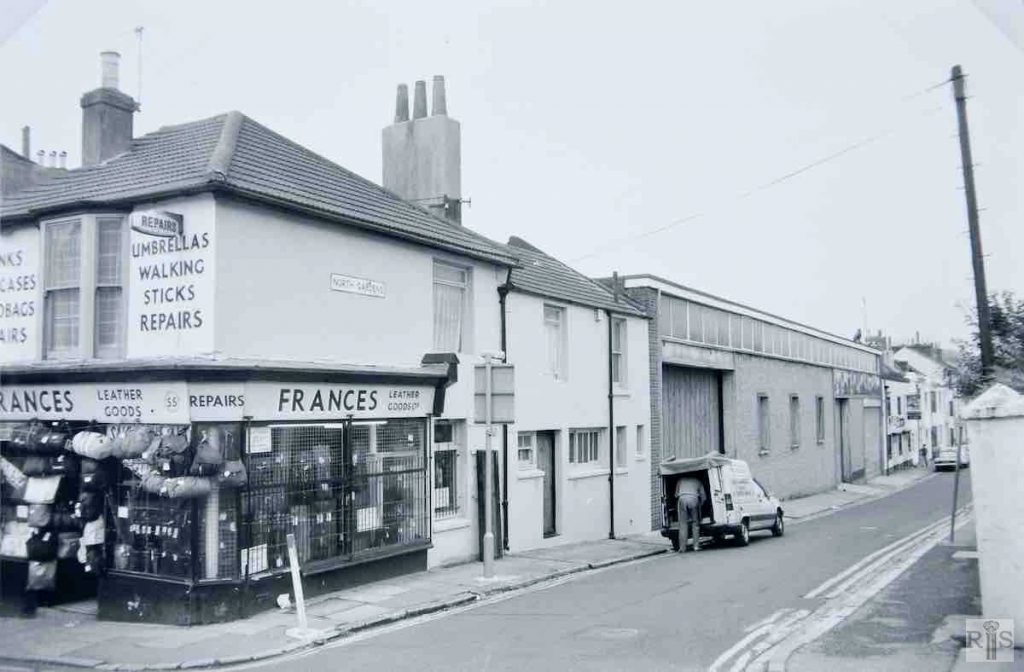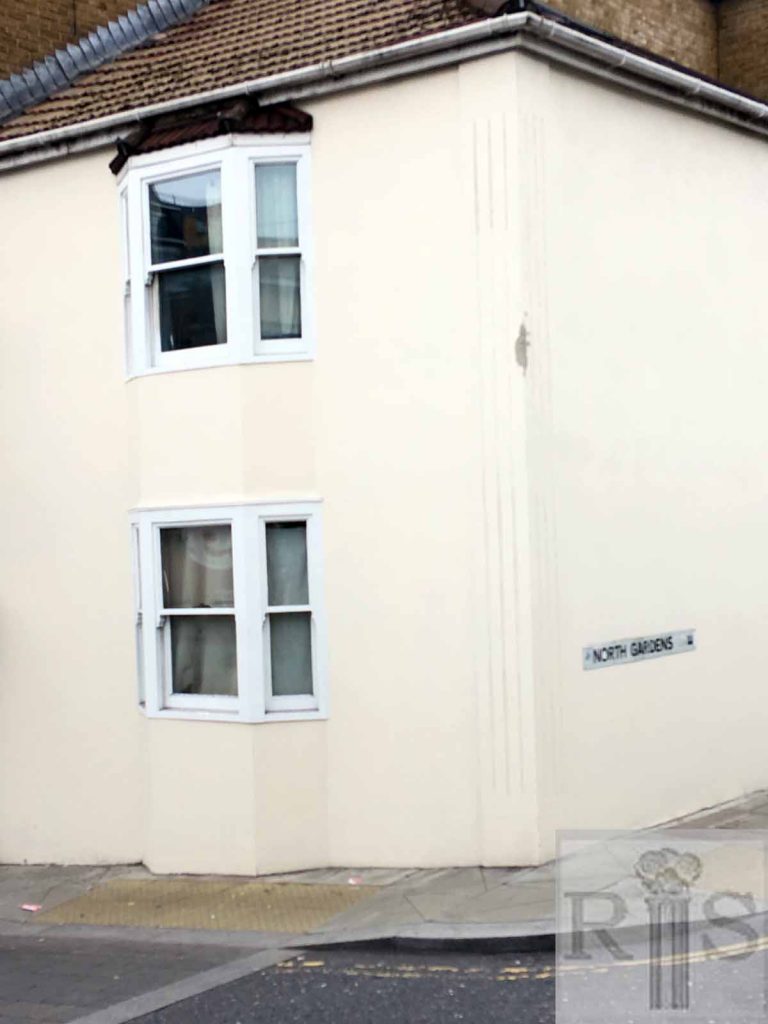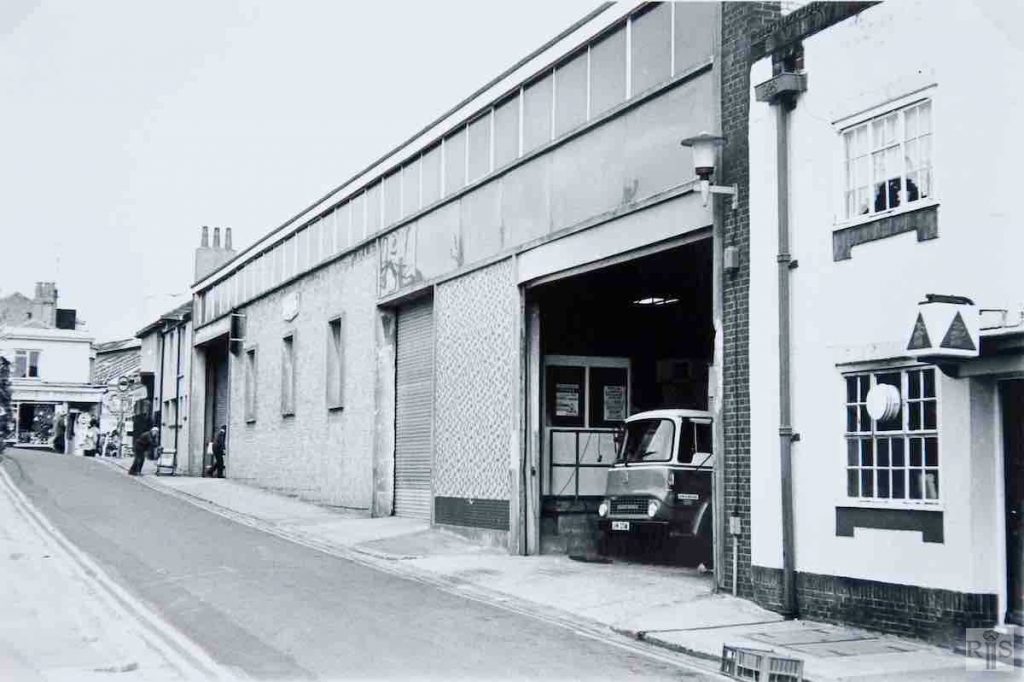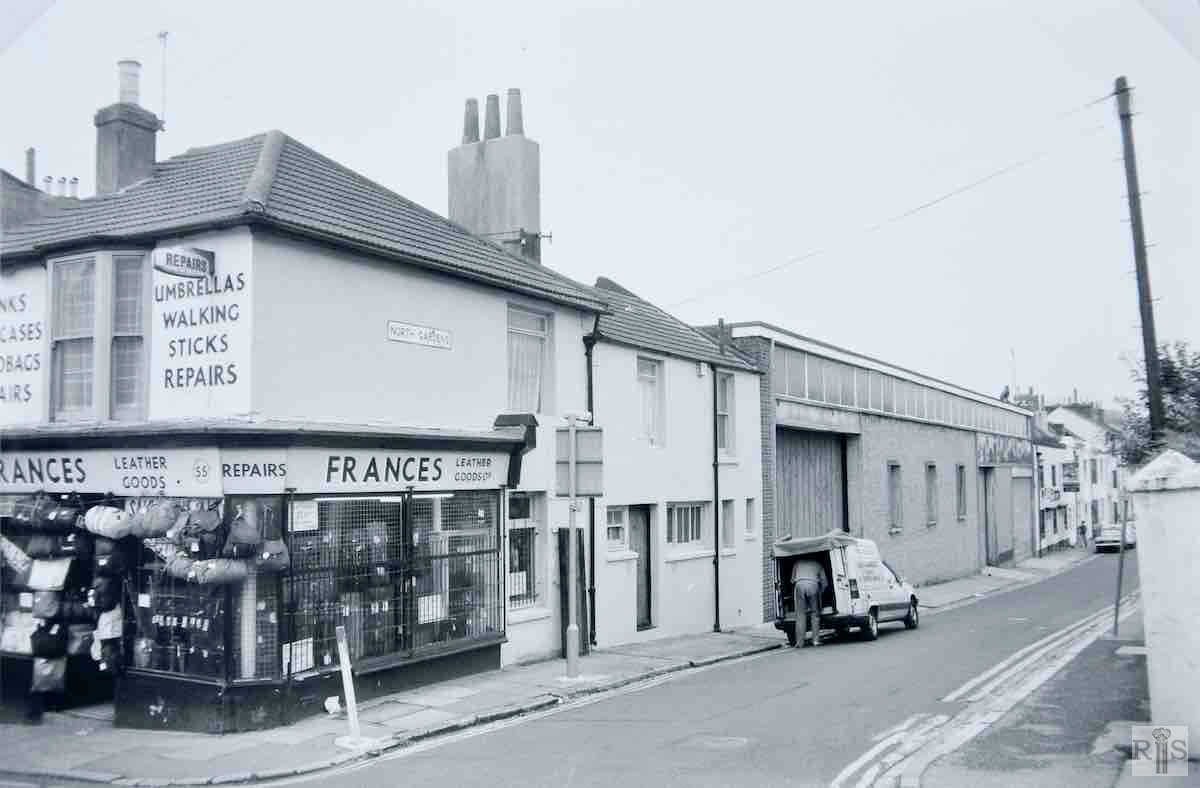
James Gray: The Caxton Arms, 36, North Gardens, prior to rebuilding. Originally three small cottages, the premises first became a public house in the 1860’s. It was reconstructed and refronted in 1928. Compare this with the large photograph on the following page. jgc_31_134
2018: Although much has changed, the windows, some with wrought-iron window boxes, signage and lighting above all. the Caxton Arms remains totally recognisable some one hundred years or so later. (Photographer: Frances Lindsay-Hills)
James Gray: See caption jgc_31_137 below. Additional Information: The current owners inform us:
“A summary of the transactions is as follows: The Rose and Crown was erected on our land between 1820 & 1823 by J.P.C.Tiller as a victualling house. The land on which is was built was known as part of the Church furlong of North Laine. The deeds also make provision for the making of a road on part of this land.
In October 1823 Tiller and his wife Ann transferred the property to Henry Faithfull; in this transfer the street to the east of the property is first named as North Gardens. There is also mention of a tenement of the south side belonging to a William Morrell which must be Rose Cottage.
In 1824 the land and house were sold to a George Wigley.
James Gray: This picturesque little Inn in quiet North Gardens had a very long, if uneventful, history. It is not known exactly when it was built. North Gardens dates from between 1800 and 1820 and the Inn is mentioned in Baxter’s New Brighton Directory, published in 1822. For a few years in its early life it may have been purely a private dwelling, with later the inn built out over the long garden. Despite all the changes wrought to Brighton in 150 years, the Inn pursued its peaceful way, until at last the brewers decided to relinquish the licence. Date of photographs – 17 May 1970. jgc_31_137
2018: The extension to the house which became the Rose and Crown was built in 1927/28. It has been almost completely demolished apart from a few feet which form the porch of the present property. A driveway has replaced the former inn and the building has reverted to being a private dwelling. The last landlord of the Rose and Crown was Len Ventham. See also jgc_31_136 above. (Photographer: Frances Lindsay-Hills)
James Gray: The focal point of these photographs is the shop, 55, Gloucester Road, at the corner of North Gardens. First occupied in the late 1850’s by J Ridge, baker, it remained as a baker’s shop in the same family for more than a century. Examples are – 1877 Isaac Ridge, 1902 Mrs Ridge, 1913 Ridge & Son. It then continued in this name through two world wars and into its second century. It is listed in Kelly’s Directory for 1960 but by 1962 the bakery has gone. In this photograph of about 1920, it seems that other things than bread were being sold in the shop. jgc_31_138
2020: Ridge & Son was replaced by a leather goods shop (see jgc_31_141 below) but is now a rather plain private dwelling. The address of both shops and the current property has remained 55 Upper Gloucester Road. (Photographer: Margaret Polmear)
James Gray: One of Brighton’s older streets, dating from the 1820’s, though the buildings which concern us here are of much later construction. The view is of the east side of the street, from Upper Gloucester Road. Here formerly stood seven small houses, 28/35, reaching down to the Caxton Arms seen in both photographs and between 30 and 31 was a small building which had a variety of uses in the period 1913/1923, such as Motor Cab Works, Dancing Hall and Repertory Theatre. Finally, in 1928, this space, with adjoining 29 and 30, was converted into a Depot for Southern Counties Dairies. After the last war this was extended southwards to the Caxton Arms, 31/35 being demolished. This depot was removed in late 1989 and offices built on the site. A view from the other end of the street taken on 26 August 1988. jgc_31_141
2020: The leather goods shop on the corner of North Gardens and Upper Gloucester Road was previously Ridge & Son, a baker’s shop (see jgc_31_138 above). It is now a private dwelling. The shop also repaired umbrellas and walking sticks and the shop owner travelled to London once a week with a bundle of umbrellas for repair. The site of the milk depot is now occupied by offices and a small terrace of houses. The Caxton Arms (see jgc_31_134 and 135 above) can be seen on the far right in both photographs. The images for jgc_31_141 were taken from Upper Gloucester Road. The images for jgc_31_140 below were taken towards Upper Gloucester Road. (Photographer: Margaret Polmear)
James Gray: One of Brighton’s older streets, dating from the 1820’s, though the buildings which concern us here are of much later construction. The view is of the east side of the street, from Upper Gloucester Road. Here formerly stood seven small houses, 28/35, reaching down to the Caxton Arms seen in both photographs and between 30 and 31 was a small building which had a variety of uses in the period 1913/1923, such as Motor Cab Works, Dancing Hall and Repertory Theatre. Finally, in 1928, this space, with adjoining 29 and 30, was converted into a Depot for Southern Counties Dairies. After the last war this was extended southwards to the Caxton Arms, 31/35 being demolished. This depot was removed in late 1989 and offices built on the site. This photograph was taken on 3 May 1986. jgc_31_140
2018: The milk depot which was used to crate up the milk floats each morning is now a terrace of houses with office accommodation at the far end. The Caxton Arms (see jgc_31_134 and 135 above) can be seen on the right of both photographs. The images for jgc_31_140 were taken looking towards Upper Gloucester Road. The images for jgc_31_141 were taken from Upper Gloucester Road. (Photographer: Frances Lindsay-Hills)
